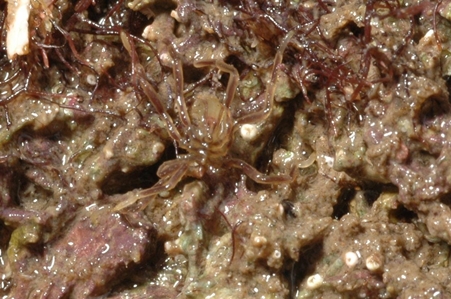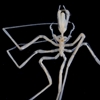Other Names
- Sea spider
General Description
Body with proboscis projecting outward from front, with the mouth at the tip. Central body (trunk) behind the proboscis, with a raised, rounded area (tubercle) bearing four or more eyes. Eight segmented walking legs attached to the sides of the trunk. Small abdomen behind trunk. Leg span about 2 cm.
Biology
This does not appear to be a common species in Port Phillip Bay, a few records exist from southern and northern parts of the bay. Males carry the eggs, holding them between body parts called ovigers that hang under the animal.
Habitat
In crevices and on reefs, associated with tube worms or anemones, to depth of 21 m.
Reefs
Distribution guide
Southern Australia.
Species Group
Depth
Water Column
Max Size
2 cm
Diet
Carnivore
Commercial Species
No
Global Dispersal
Native to Australia
Conservation Status
- DSE Advisory List : Not listed
- EPBC Act 1999 : Not listed
- IUCN Red List : Not listed







